Which Plants Don’t Like Tea Leaves? Tips for Tea-Free Gardening
Gardening enthusiasts often look for ways to reuse kitchen waste, including tea leaves. While tea leaves can be beneficial for some plants, many plants dislike tea leaves. Knowing which plants fall into this category can save you from seeing your beloved greens wilt.
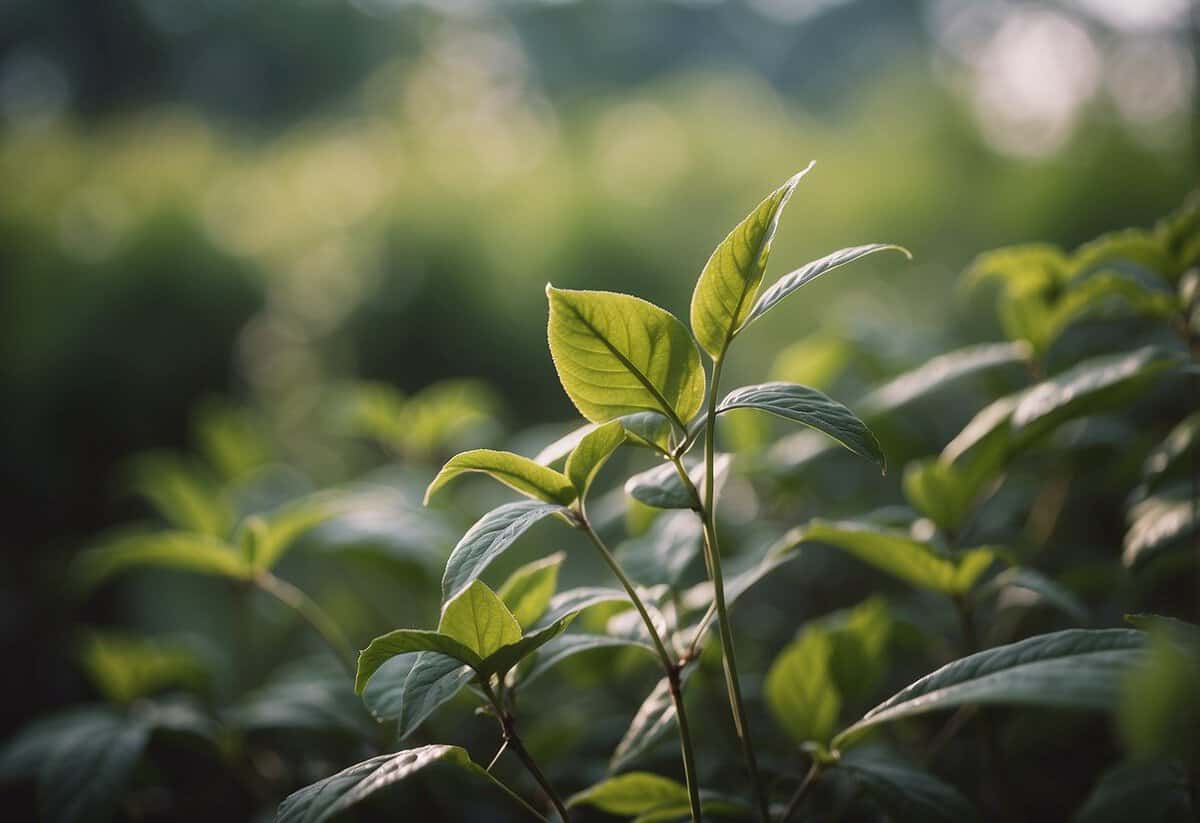
Plants that prefer neutral or alkaline soil, such as chrysanthemums, daisies, and marigolds, don’t benefit from tea leaves. In fact, the tannic acid in tea can harm them. Including tea leaves in their soil can lead to increased acidity, which is detrimental to these plants.
To keep your garden flourishing, avoid adding tea leaves to soil around plants like Boston ivy, cacti, and baby’s breath. By understanding which plants prefer different soil conditions, you can make better choices that help your garden thrive.
Understanding Soil Acidity and Alkalinity
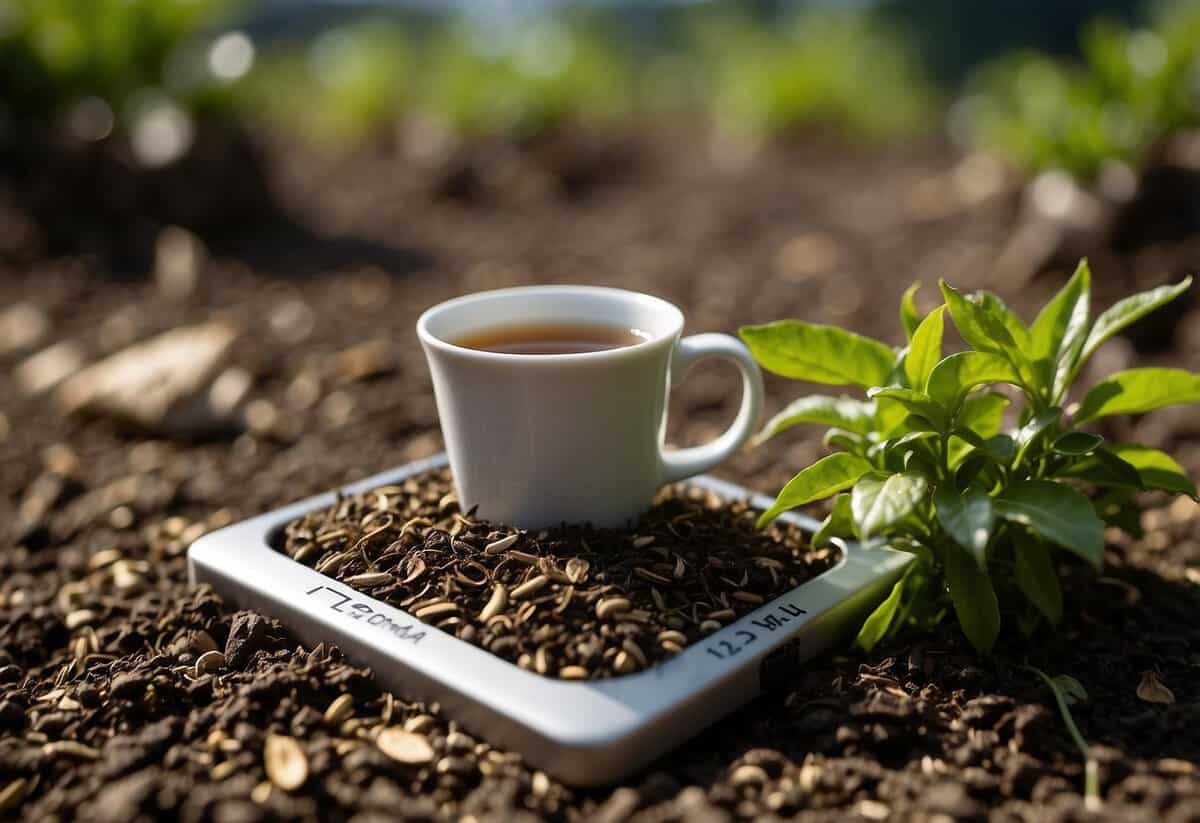
Soil pH is important for your garden because it affects how well your plants can absorb nutrients. The pH scale ranges from 0 to 14. Acidic soil has a pH below 7, while alkaline soil has a pH above 7. A pH of 7 is considered neutral.
The pH Scale
| pH Level | Soil Type |
|---|---|
| 0 – 6.9 | Acidic Soil |
| 7 | Neutral Soil |
| 7.1 – 14 | Alkaline Soil |
Why pH Matters
Different plants prefer different pH levels. For example, blueberries and azaleas thrive in acidic conditions. Lavender and oleander do well in alkaline soil.
Testing Your Soil
To keep your garden healthy, you need to test your soil’s pH. You can buy a simple pH testing kit, or send a sample to a lab.
Tips for Adjusting pH
- To Lower pH (Make More Acidic)
- Add sulfur or peat moss.
- To Raise pH (Make More Alkaline)
- Add lime or wood ash.
Knowing your soil’s pH helps you choose the right plants and ensures they get the nutrients they need. When your soil’s pH is balanced, your plants are more likely to thrive.
The Benefits and Drawbacks of Using Tea Leaves as Fertilizer
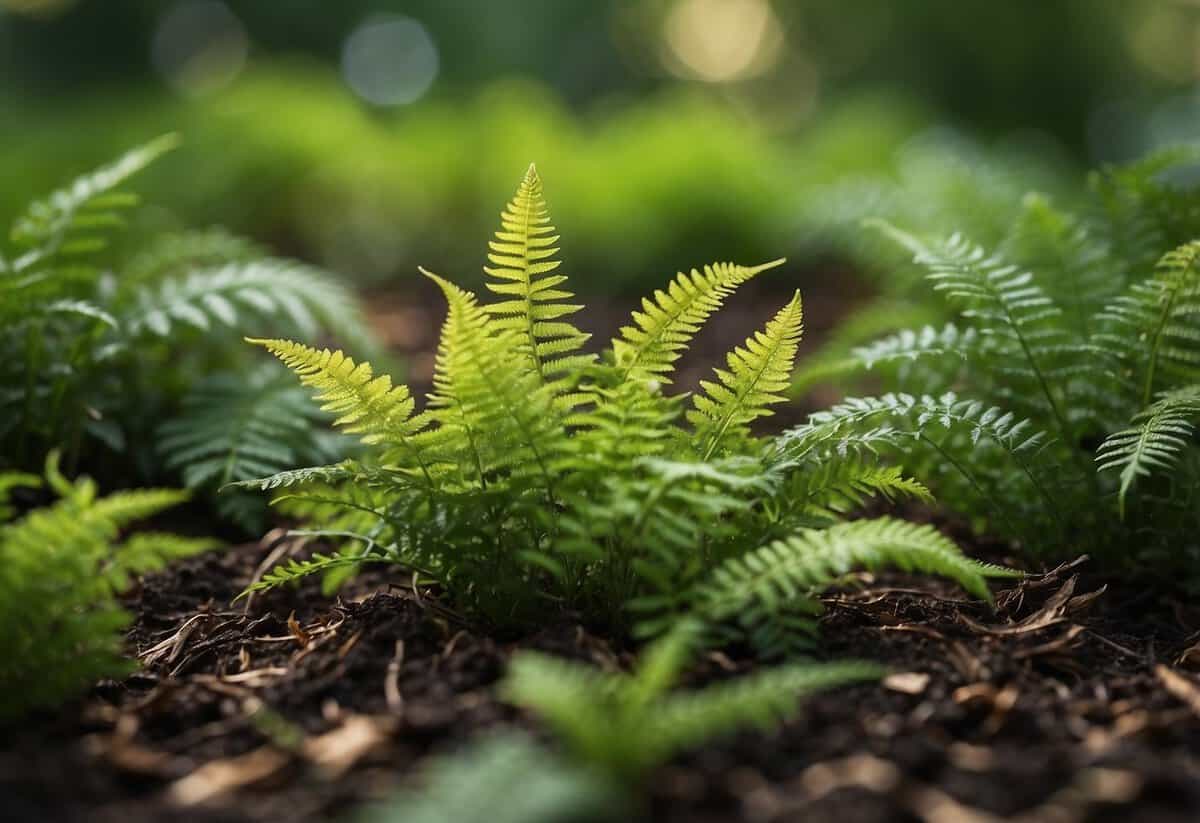
Tea leaves offer a mix of benefits and challenges when used as fertilizer. They can enrich your soil, but there are also specific issues to watch out for. Here’s what you need to know.
Nutrient Content in Tea Leaves
Tea leaves are rich in nitrogen, which is essential for plant growth. Both green tea and black tea contain this nutrient, helping to promote the healthy development of your plants. Besides nitrogen, tea leaves also contain minerals such as potassium and phosphorus, which support overall plant health. When added to compost, tea leaves enhance the decomposition process, breaking down more quickly and enriching the soil. Used tea bags, provided they are free of staples and strings, can also contribute to your garden’s nutrient profile.
Pros of Using Tea Leaves for Plant Growth
Using tea leaves as a natural fertilizer can be highly beneficial. The nitrogen content helps boost plant growth, making your plants greener and more vibrant. Tea leaves also improve soil structure, aiding in better oxygenation and water retention. This makes the soil more amenable to plant roots, facilitating better nutrient uptake. Spreading tea grounds around your plants can also act as a mulch, retaining moisture and suppressing weeds effectively. Additionally, recycling used tea bags into your garden is an eco-friendly practice that reduces waste.
Potential Issues with Tea Leaves in Gardens
Despite the benefits, there are some potential drawbacks to using tea leaves in your garden. One issue is the presence of tannic acid in tea, which can lower the soil pH and make it more acidic. While this is good for acid-loving plants like hydrangeas and rhododendrons, it is not suitable for plants that prefer neutral or alkaline soil. Overuse of tea leaves can also lead to an imbalance in nitrogen levels, potentially harming plants that are sensitive to high nitrogen content. Furthermore, some tea bags contain synthetic materials that do not decompose well, so it’s important to ensure only biodegradable materials are used.
Plants That Love Acidic Conditions
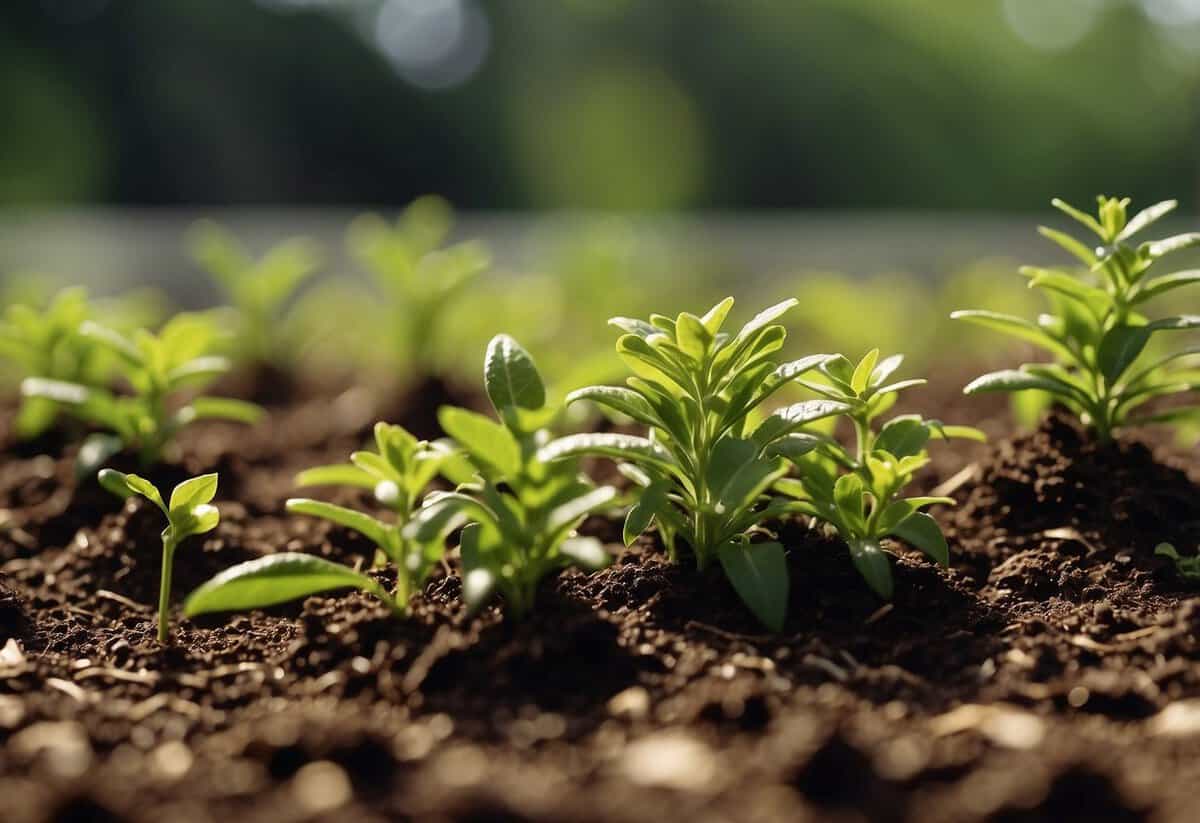
Some plants thrive in acidic soil conditions. These plants often produce vibrant blooms and foliage when grown in the proper environment.
Flowering Beauties: Azaleas and Rhododendrons
Azaleas and rhododendrons are flowers that love acidic soil. These plants produce stunning blooms in various colors like pink, white, and purple. You should plant them in soil with a pH between 4.5 and 6.0.
For rhododendrons, keep the soil consistently moist but not waterlogged. Ensure adequate drainage to prevent root rot. Both plants thrive in part shade to full sunlight. Add organic matter like pine needles or peat moss to keep the soil acidic and well-draining.
Verdant Delights: Ferns and Hydrangeas
Various ferns, including the maidenhair fern, thrive in acidic environments. Ferns are perfect for adding rich, green foliage to your garden. They prefer shaded areas with plenty of moisture. Plant them in soil with a pH of 4.0 to 7.0 for optimal growth.
Hydrangeas are another acid-loving plant that can produce blue flowers when grown in acidic soil. To keep them happy, maintain a soil pH between 5.2 and 5.5. The color of hydrangea blooms can change based on the soil’s acidity.
The Edible Favorites: Blueberries and Tomatoes
Blueberries flourish in soil that is acidic. Aim for a soil pH between 4.5 and 5.5 to enjoy a bountiful harvest. Well-drained, sandy soil is ideal. Blueberries also need full sun and consistent moisture for the best yields.
Tomatoes can also benefit from slightly acidic soil. Plant them in soil with a pH around 6.0 to 6.8. They require full sun and well-draining soil. Use compost or organic fertilizers to maintain the acidity and provide essential nutrients. This ensures healthy plants and a good harvest.
Gardening Tips for Non-Acidic Soil Enthusiasts
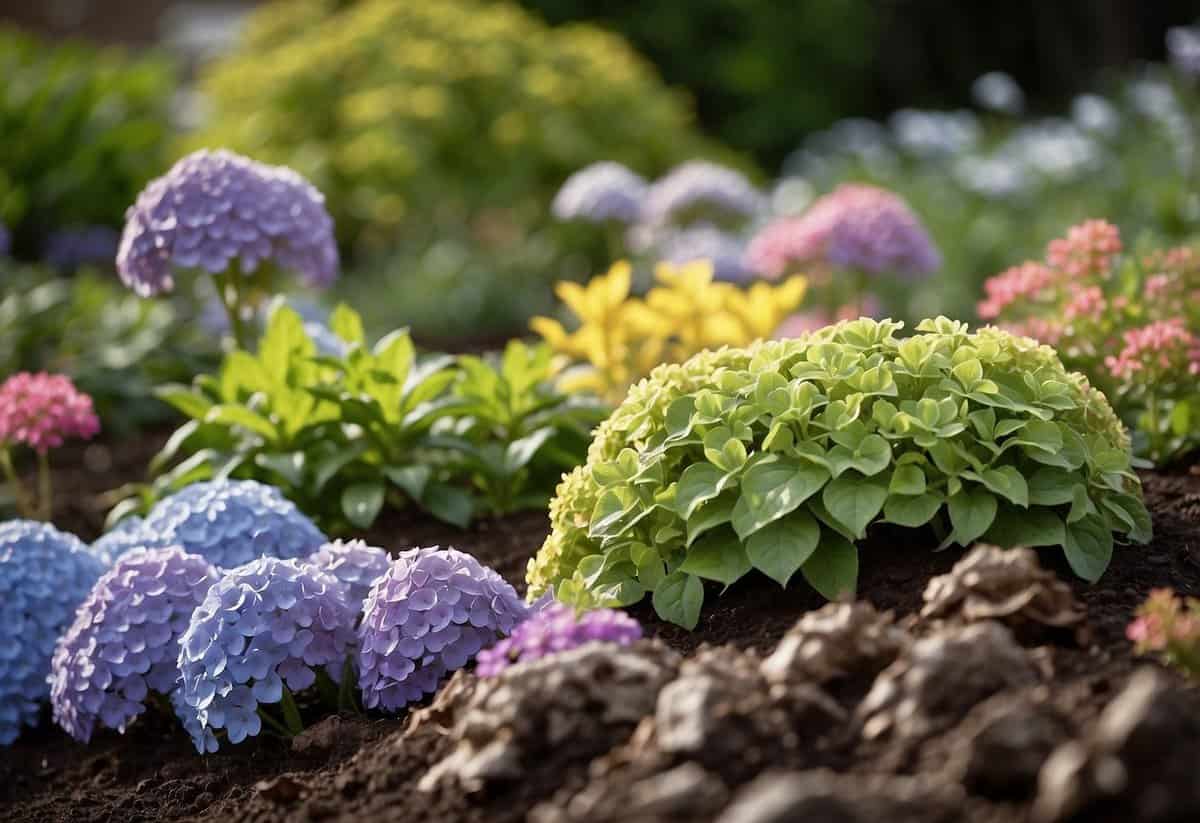
When gardening in neutral to alkaline soil, it’s important to choose the right plants and use proper compost and mulching techniques to ensure healthy growth.
Caring for Neutral to Alkaline-Loving Plants
Many flowers and vegetables thrive in neutral to alkaline soil. Geraniums, daisies, carnations, and dahlias are great choices. Orchids and cacti also prefer these conditions.
For vegetables, consider cabbage and sunflowers. Your herbs, such as chamomile, will also do well. Even marigolds and hibiscus appreciate neutral to alkaline soil.
Make sure to check the soil’s pH levels regularly. Aim for a pH range of 7 to 8. Keeping your soil neutral will prevent nutrient lockout and promote healthy plant growth. Ensure your plants get enough potassium and phosphorus as these nutrients thrive in less acidic environments.
Optimizing Compost and Mulch Mixtures
To maintain optimal soil conditions, balance your compost with both green (nitrogen-rich) and brown (carbon-rich) materials. Avoid adding acidic items like tea leaves. Instead, use materials like grass clippings, vegetable scraps, and dry leaves.
Mulching helps retain soil moisture and regulate temperature. Use wood chips, straw, or composted bark for mulching. These materials gradually add nutrients to the soil without altering its pH.
By focusing on these mixtures and your soil’s specific needs, you can create a thriving garden environment. This approach will support your plants’ health and ensure vibrant blooms and bountiful harvests.
Avoiding Plant Problems: Which Ones Dislike Tea Leaves?
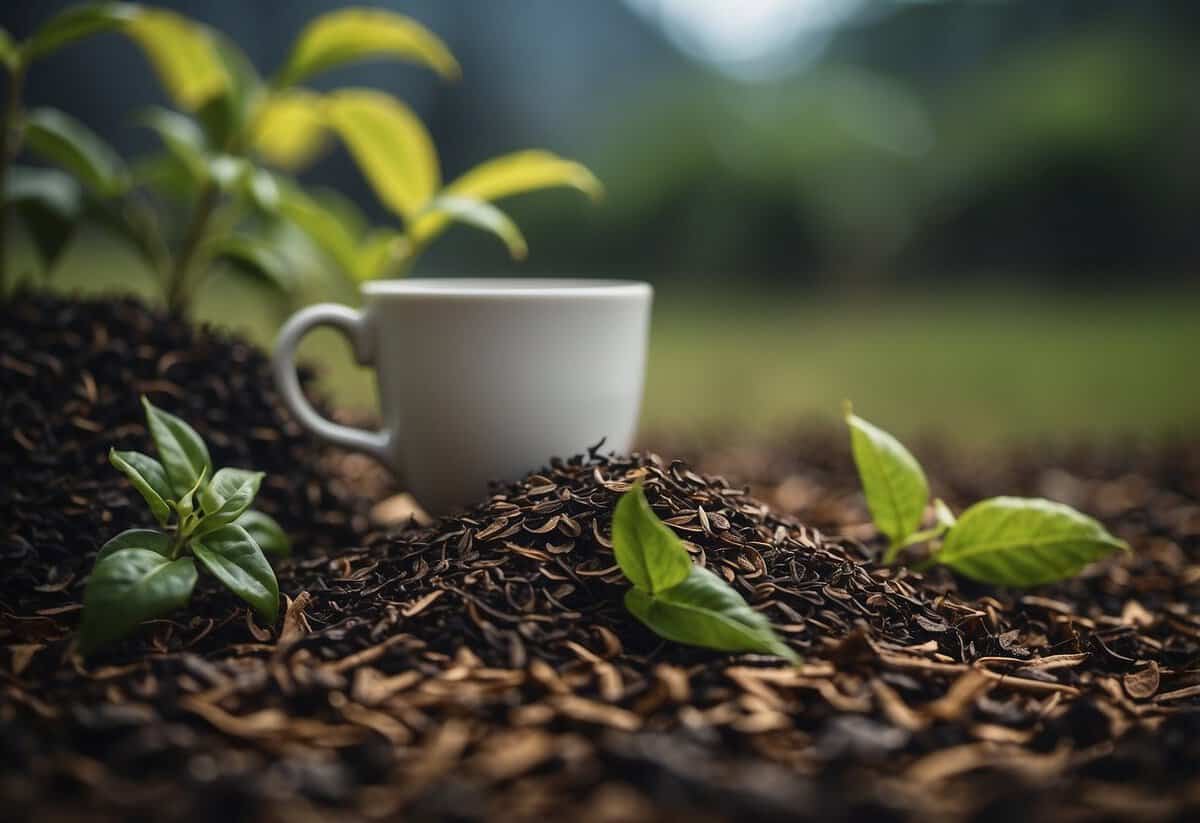
Certain plants react poorly to tea leaves due to their specific needs and the chemicals tea contains. Knowing which plants to avoid feeding with tea leaves can prevent problems in your garden.
Sensitive Plant Species to Avoid With Tea Leaves
Chrysanthemums, daisies, and marigolds dislike tea leaves because they contain tannins that make the soil more acidic. These plants prefer neutral to slightly alkaline soil.
Boston ivy and baby’s breath also don’t enjoy tea. The increased acidity may damage their roots and stunt their growth.
Spider plants, rubber plants, and poinsettias should be kept away from tea leaves too. They are sensitive to fluoride and aluminum, which can be present in tea leaves.
Philodendrons and African violets may also suffer from the acidity, showing signs of leaf burn and poor growth.
Common Houseplants That Dislike Tea Leaves:
| Plant Name | Common Issue with Tea |
|---|---|
| Chrysanthemums | Soil becomes too acidic |
| Daisies | Root damage |
| Marigolds | Stunted growth |
| Boston ivy | Acidic soil reactions |
| Baby’s breath | Poor root growth |
| Spider plants | Fluoride sensitivity |
| Rubber plants | Aluminum toxicity |
Managing Pests and Diseases Without Tea Leaves
Using tea leaves to combat pests and diseases can backfire if the plants are sensitive. Instead, opt for methods that don’t harm your plants.
For example, combat pests like slugs using a mixture of water and mild soap. You can also use coffee grounds to deter pests, which provides a natural barrier without increasing acidity.
If you’re dealing with fungal issues, consider using a baking soda solution. Mix one tablespoon of baking soda with one liter of water. Spray it on plants affected by fungal diseases like powdery mildew.
For mites or insects, use neem oil spray. It’s plant-friendly and effective against a variety of pests.
By choosing these alternatives, you can avoid harming your sensitive plants while still keeping your garden healthy and pest-free. Choose wisely and tailor your pest management strategies to suit the specific plants in your care.







